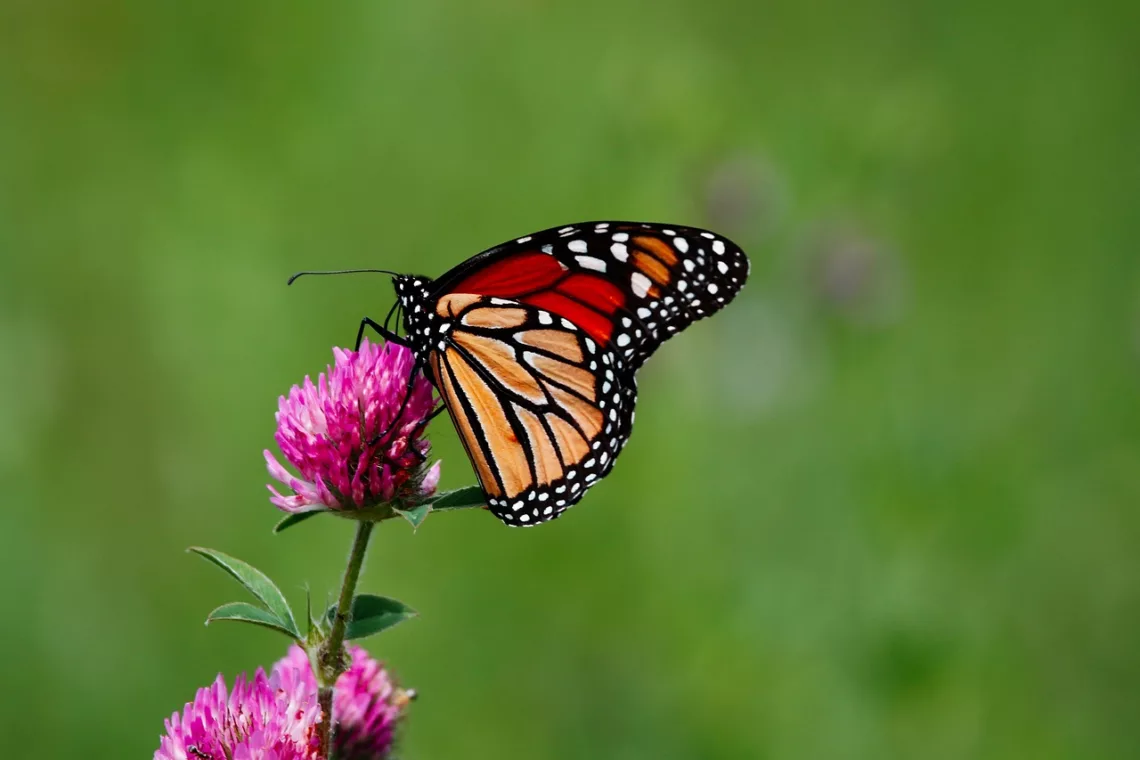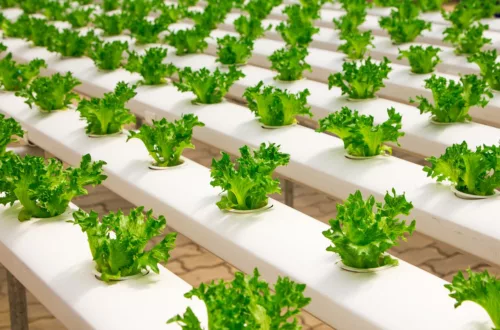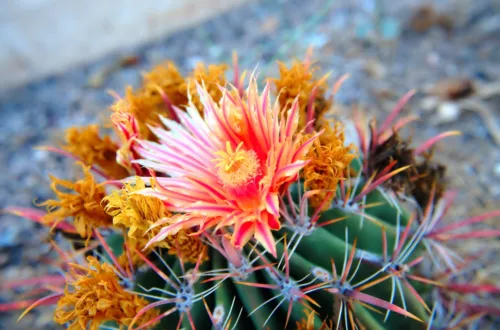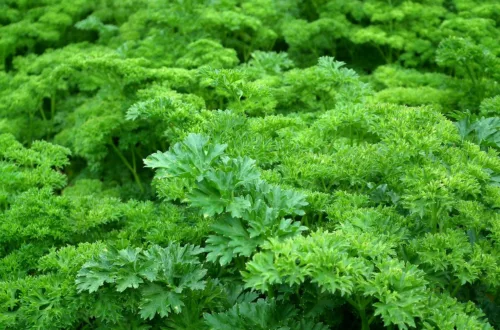If you’re a butterfly enthusiast, you know that butterflies are an essential part of our ecosystem. Not only are they beautiful to look at, but they also play a vital role in pollinating plants. However, did you know that you can attract more butterflies to your garden by planting specific herbs?
Disclaimer: This article is provided for informational purposes only and should not replace professional medical advice. Please consult with a qualified healthcare practitioner or herbalist before using any herbal remedies.
Certain herbs are known to be particularly attractive to butterflies. These herbs can provide food and shelter for butterflies, which in turn can help to increase their population. Some of the most popular herbs for butterflies include milkweed, parsley, dill, and fennel. These herbs are not only easy to grow, but they are also great for adding color and fragrance to your garden. In this article, we’ll take a closer look at some of the best herbs for attracting butterflies and explore how you can use them to create a butterfly-friendly garden.
Understanding Butterfly Preferences~ Herbs for Butterflies
When it comes to attracting butterflies to your herb garden, it’s important to understand their preferences. Butterflies are attracted to specific plants based on their visual appearance, fragrance, and the availability of nectar. In this section, we’ll discuss the importance of sunlight and soil requirements for herb gardens that are attractive to butterflies.
Importance of Sunlight
Butterflies prefer to feed and bask in the sun, so it’s important to choose herbs that thrive in full sun. Herbs such as basil, oregano, and thyme require full sun to grow and produce fragrant leaves that attract butterflies. On the other hand, herbs such as parsley and cilantro prefer partial shade and can be planted in areas that receive less sunlight.
Soil Requirements for Herb Gardens
Butterflies prefer well-drained soil that is moist but not waterlogged. Herbs such as lavender, rosemary, and sage require well-drained soil to prevent root rot and fungal diseases. It’s important to add organic matter such as compost or aged manure to the soil before planting to improve soil structure and fertility.
When it comes to attracting butterflies to your herb garden, it’s important to choose plants that meet their preferences. By selecting herbs that thrive in full sun and well-drained soil, you can create a beautiful and fragrant garden that will attract butterflies and other beneficial insects.
Designing a Butterfly Friendly Herb Garden~ Herbs for Butterflies
As herb gardeners, we have the opportunity to attract and support butterfly populations by designing a butterfly-friendly herb garden. Not only will this benefit butterflies, but it will also add beauty and fragrance to our outdoor space. Here are some tips on designing a butterfly-friendly herb garden.
Choosing the Right Location
When choosing a location for your herb garden, keep in mind that butterflies need sunlight to thrive. Select a spot that receives at least six hours of sunlight per day. It’s also important to choose a location that is sheltered from strong winds, as butterflies can struggle to fly in windy conditions.
Layout and Plant Grouping
The layout of your herb garden can also impact its butterfly-friendliness. Instead of planting herbs in a straight line, try grouping them in clusters. This will create a more natural look and provide shelter for butterflies. Additionally, planting native plants and butterfly plants can attract more butterflies to your garden.
When selecting herb species for your garden, consider planting those that are known to attract butterflies. Some examples include dill, fennel, lavender, and thyme. These herbs not only provide food for butterflies but also offer shelter and a place to lay eggs.
In conclusion, designing a butterfly-friendly herb garden is a great way to support butterfly populations while adding beauty and fragrance to your outdoor space. By choosing the right location, layout, and plant species, we can create a garden that is welcoming and friendly to these important pollinators.
Top Herbs for Attracting Butterflies~ Herbs for Butterflies
If you are looking to attract butterflies to your garden, planting herbs can be a great way to do so. Not only do herbs provide food sources for adult butterflies, but some herbs also serve as host plants for butterfly eggs and caterpillars. In this section, we will cover the top herbs for attracting butterflies and the different ways in which they can benefit these beautiful insects.
Nectar-Rich Herbs
One of the best ways to attract butterflies to your garden is by planting nectar-rich herbs. These herbs provide a source of food for adult butterflies and can help sustain them throughout the season. Some of the best nectar-rich herbs for attracting butterflies include:
- Basil: This herb produces small, delicate flowers that are highly attractive to butterflies. Bees and other pollinators also love basil flowers, making it a great addition to any pollinator garden.
- Lavender: Not only is lavender a beautiful addition to any garden, but it also produces fragrant flowers that butterflies find irresistible. Planting lavender in a sunny spot can help attract a variety of butterfly species.
- Mint: Mint produces small, clustered flowers that are a favorite of many butterfly species. Planting different varieties of mint can help attract a wider range of butterflies to your garden.
Herbs as Butterfly Host Plants
In addition to providing nectar sources for adult butterflies, some herbs also serve as host plants for butterfly eggs and caterpillars. These herbs are known as larval host plants and are essential for the survival of many butterfly species. Some of the best herbs to plant as larval host plants include:
- Dill: Dill is a favorite host plant of the swallowtail butterfly. Planting dill in your garden can help attract these beautiful butterflies and provide a source of food for their caterpillars.
- Fennel: Fennel is another great host plant for swallowtail butterflies. It produces feathery foliage that caterpillars love to feed on.
- Parsley: Parsley is a host plant for the black swallowtail butterfly. Planting parsley in your garden can help attract these butterflies and provide a food source for their caterpillars.
By planting nectar-rich herbs and larval host plants in your garden, you can help attract a variety of butterfly species and provide them with the resources they need to survive and thrive.
Herbs for Adult Butterfly Nourishment~ Herbs for Butterflies
As butterfly enthusiasts, we know how important it is to provide adult butterflies with a reliable source of nectar. Here are some of the best herbs to plant in your garden to ensure your adult butterflies are well-nourished.
Best Nectar Sources
When it comes to nectar sources, there are a few herbs that are particularly attractive to adult butterflies. These include:
- Basil: This herb produces a lot of nectar and is a favorite of many butterfly species, including the swallowtail and fritillary.
- Mint: Mint is a great choice for attracting butterflies because it produces nectar continuously throughout the growing season. It’s also a favorite of the black swallowtail and the cloudless sulphur.
- Lavender: Lavender is not only beautiful, but it’s also a great source of nectar for adult butterflies. It’s particularly attractive to the painted lady and the eastern tiger swallowtail.
- Thyme: Thyme is a low-growing herb that produces a lot of nectar. It’s also a favorite of the common buckeye and the spicebush swallowtail.
Continuous Blooming Varieties
To ensure a steady supply of nectar for your adult butterflies, it’s important to choose herbs that bloom continuously throughout the growing season. Here are some of the best continuous blooming varieties:
- Bee balm: Bee balm produces a lot of nectar and blooms for a long time, making it a great choice for attracting adult butterflies.
- Echinacea: Echinacea, also known as coneflower, is a beautiful and hardy herb that produces a lot of nectar. It’s particularly attractive to the monarch butterfly.
- Coreopsis: Coreopsis is a bright and cheerful herb that produces a lot of nectar. It’s also a favorite of the pearl crescent and the eastern tailed-blue.
- Salvia: Salvia is a great choice for attracting adult butterflies because it produces a lot of nectar and blooms continuously throughout the growing season. It’s particularly attractive to the black swallowtail and the spicebush swallowtail.
By planting these herbs in your garden, you can provide adult butterflies with a reliable source of nectar that will help them thrive. Happy gardening!
Supporting Butterfly Development~ Herbs for Butterflies
As herb enthusiasts, we can help support butterfly development by planting herbs that caterpillars can feed on. Providing caterpillar food sources is crucial for the survival of butterfly populations. Below are some herbs that caterpillars love to munch on:
Caterpillar Food Sources
- Dill – Dill is a favorite of swallowtail butterfly caterpillars. It is a versatile herb that can be grown in containers or in the ground. Dill can grow up to 3 feet tall and produces feathery leaves that caterpillars love to eat.
- Parsley – Parsley is another herb that swallowtail butterfly caterpillars enjoy. It is easy to grow and can be used in a variety of dishes. Parsley can grow up to 2 feet tall and produces flat, green leaves that caterpillars can feast on.
- Fennel – Fennel is a unique herb that is loved by many butterfly species. It is a tall plant that can grow up to 6 feet tall. Fennel produces feathery leaves and yellow flowers that attract butterflies. Caterpillars love to feed on the leaves of fennel.
Protective Herbs for Larvae
In addition to providing food sources, we can also plant herbs that protect larvae from predators. Below are some protective herbs that can help keep caterpillars safe:
- Borage – Borage is a beautiful herb that produces blue, star-shaped flowers. It is known to repel tomato hornworms, which can be a threat to butterfly larvae.
- Chives – Chives are a versatile herb that can be used in a variety of dishes. They also produce beautiful purple flowers that attract butterflies. Chives are known to repel aphids, which can be harmful to butterfly larvae.
- Marigolds – Marigolds are a popular herb that produces vibrant orange and yellow flowers. They are known to repel a variety of pests, including whiteflies and nematodes, which can harm butterfly larvae.
By planting these herbs in our gardens, we can help support butterfly development and protect butterfly larvae from predators. We can also enjoy the beauty and benefits of these herbs in our cooking and daily lives.
Regional Considerations for Herb Selection~ Herbs for Butterflies
When selecting herbs for butterfly gardens, it is important to consider the regional factors that may affect the success of the garden. In this section, we will explore some of the considerations for herb selection in North America, with a focus on local and native varieties.
Herbs for North American Butterflies
North America is home to a diverse range of butterfly species, each with their own unique habitat requirements. When selecting herbs for a butterfly garden in North America, it is important to choose varieties that are well-suited to the local climate and soil conditions.
Some popular herbs for North American butterflies include:
- Milkweed (Asclepias spp.): A favorite of monarch butterflies, milkweed is a native plant that is easy to grow and provides an important food source for caterpillars.
- Goldenrod (Solidago spp.): A fall-blooming herb that attracts a variety of butterfly species, goldenrod is a hardy plant that is well-suited to many regions of North America.
- Purple coneflower (Echinacea purpurea): A native prairie plant that is easy to grow and provides nectar for a variety of butterfly species.
Local and Native Herb Varieties
When selecting herbs for a butterfly garden, it is important to choose varieties that are native to the local area. Native plants are better adapted to the local climate and soil conditions, and they provide important habitat and food sources for local butterfly species.
Some popular local and native herbs for butterfly gardens include:
- Bee balm (Monarda spp.): A native plant that attracts a variety of butterfly species, bee balm is well-suited to many regions of North America.
- Black-eyed Susan (Rudbeckia hirta): A hardy, native plant that provides nectar for a variety of butterfly species.
- Wild bergamot (Monarda fistulosa): A native plant that attracts a variety of butterfly species, wild bergamot is well-suited to many regions of North America.
When selecting herbs for a butterfly garden, it is important to choose varieties that are well-suited to the local climate and soil conditions. By choosing local and native varieties, we can create a garden that is not only beautiful but also provides important habitat and food sources for local butterfly species.
Herbs That Thrive in Challenging Climates~ Herbs for Butterflies
As butterfly enthusiasts, we know that creating a butterfly garden can be a rewarding experience. However, it can also be challenging, especially if you live in an area with extreme heat or poor soils. But don’t worry, there are herbs that can thrive in these challenging climates.
Drought-Tolerant Herbs
If you live in an area with extreme heat and drought, consider planting herbs that are drought-tolerant. These herbs can survive with minimal watering and still provide nectar for butterflies. Some examples of drought-tolerant herbs include:
- Lavender
- Sage
- Thyme
- Oregano
- Rosemary
These herbs not only provide nectar for adult butterflies but also serve as host plants for their caterpillars. Plus, they add a lovely fragrance to your garden.
Herbs for Cooler Regions
If you live in a cooler region like Nova Scotia, you may think that creating a butterfly garden is impossible. However, there are herbs that can thrive in cooler climates. Some examples of herbs for cooler regions include:
- Mint
- Chives
- Dill
- Parsley
- Cilantro
These herbs may not be as drought-tolerant as the ones mentioned above, but they can still survive in cooler temperatures. They also provide nectar for adult butterflies and serve as host plants for their caterpillars.
In conclusion, creating a butterfly garden in challenging climates is possible with the right herbs. By planting drought-tolerant herbs or herbs for cooler regions, you can provide nectar for adult butterflies and host plants for their caterpillars. Happy gardening!
Year-Round Butterfly Support~ Herbs for Butterflies
Attracting butterflies to your garden is a rewarding experience that can be enjoyed year-round. By providing a variety of herbs that bloom at different times of the year, we can ensure that our gardens are a haven for these beautiful creatures.
Early Season Bloomers
In early spring, butterflies emerge from their cocoons and begin searching for nectar to fuel their flight. Herbs such as chives, lavender, and thyme are excellent choices for early season bloomers. These herbs provide a much-needed source of nectar when other plants are still dormant. Additionally, chives and thyme are host plants for many butterfly species, including the Eastern Black Swallowtail and the Gray Hairstreak.
Late Season Providers
As the summer months draw to a close, many butterfly species are still active and searching for food. Herbs such as fennel, parsley, and dill are perfect for late season bloomers. These herbs not only provide a source of nectar but also act as host plants for many butterfly species, including the Black Swallowtail and the Anise Swallowtail.
By planting a variety of herbs that bloom at different times of the year, we can ensure that our gardens are a year-round source of food and shelter for butterflies. In addition to providing nectar and host plants, we can also create a welcoming environment by providing a shallow dish of water and a sunny spot for butterflies to bask in the sun.
Remember, it’s important to avoid the use of pesticides in our gardens, as these chemicals can be harmful to butterflies and other beneficial insects. By creating a pesticide-free environment and providing a variety of herbs that bloom at different times of the year, we can create a garden that is not only beautiful but also beneficial to the environment.
Common Butterfly Species and Their Preferred Herbs
As herb enthusiasts, we know that herbs are not only useful for cooking and medicinal purposes, but they also play a vital role in the ecosystem. Herbs are a great source of food and shelter for many species of wildlife, including butterflies. In this section, we will explore some of the common butterfly species and their preferred herbs.
Monarchs and Milkweeds
Monarch butterflies are one of the most well-known butterfly species in North America. These beautiful creatures are famous for their striking orange and black wings. Monarchs are also known for their migration to Mexico during the winter months.
When it comes to their preferred herbs, Monarchs have a strong preference for milkweeds. Milkweeds are a group of herbaceous plants that are native to North America. These plants contain cardiac glycosides, which are toxic to most animals, but Monarchs have evolved to tolerate these toxins. In fact, Monarch larvae feed exclusively on milkweed leaves, and the adult butterflies also feed on the nectar of milkweed flowers.
Swallowtails and Their Favorite Herbs
Swallowtail butterflies are a diverse group of butterflies that are known for their distinctive tails on their hindwings. There are many species of Swallowtails, but some of the most common ones include the Black Swallowtail and the Western Tiger Swallowtail.
Black Swallowtails are found throughout North America and are known for their striking black and yellow wings. These butterflies have a preference for herbs in the carrot family, such as dill, parsley, and fennel. The larvae of Black Swallowtails feed on the leaves of these herbs, while the adult butterflies feed on their nectar.
Western Tiger Swallowtails are found in western North America and are known for their beautiful yellow and black wings. These butterflies have a preference for herbs in the rose family, such as thistles, milkweeds, and violets. The larvae of Western Tiger Swallowtails feed on the leaves of these herbs, while the adult butterflies feed on their nectar.
In conclusion, herbs play an important role in the ecosystem and are a great source of food and shelter for many species of wildlife, including butterflies. By planting herbs in our gardens, we can help support these beautiful creatures and enjoy their beauty at the same time.
Maintaining a Healthy Herb Garden for Butterflies
As herb gardens are one of the best ways to attract butterflies, it is important to maintain a healthy herb garden to ensure that the butterflies are well-fed and happy. In this section, we will discuss some tips on how to maintain a healthy herb garden for butterflies.
Organic Gardening Practices
Firstly, it is important to use organic gardening practices when maintaining a herb garden for butterflies. This means avoiding the use of pesticides and chemical fertilizers, which can harm the butterflies and their larvae. Instead, we can use natural fertilizers such as compost and manure, and companion planting to help control pests.
We can also use organic matter such as leaf litter and mulch to improve the soil quality and retain moisture in the soil. This will help our herbs grow strong and healthy, providing a good source of food for the butterflies.
Dealing with Pests and Diseases
Despite our best efforts, pests and diseases may still affect our herb garden. One common problem is powdery mildew, a fungal disease that can affect many herbs. To prevent powdery mildew, we can ensure that our herb garden has good air circulation, and avoid overhead watering. We can also use natural remedies such as neem oil or a baking soda solution to treat powdery mildew.
Another common pest is the aphid, which can be controlled by releasing ladybugs or lacewings into the garden. We can also use companion planting to repel aphids, such as planting garlic or chives near our herbs.
By following these tips, we can maintain a healthy herb garden for butterflies, providing them with a good source of food and a safe place to lay their eggs.







